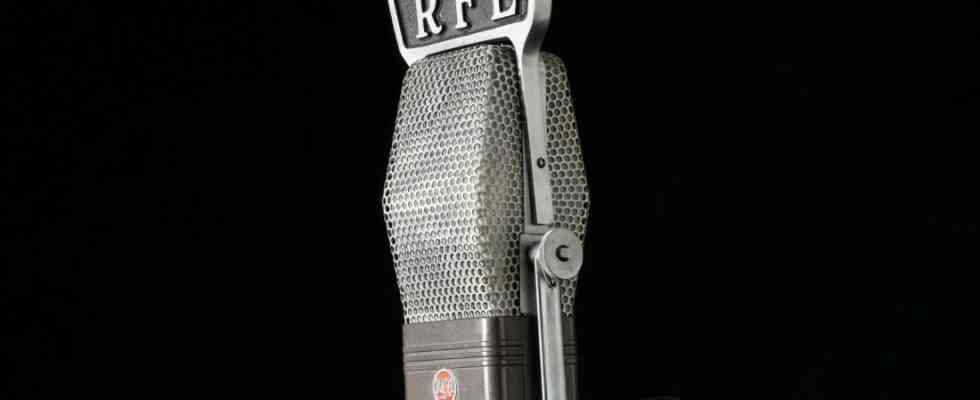The Cold War. The Balance of Terror. These are terms that many young people only know from history classes or from old James Bond films. For the older ones, on the other hand, they were part of their own reality. They were the expression of an ideological dispute that inscribed itself in the biographies of countless people. Whether the Cold War really came to an end 30 years ago is no longer so certain. At the same time, much of what happened back then still seems to have not been told. How strongly the Cold War shaped individual biographies in Munich, at any rate, can be seen in a current exhibition in the Einwand Gallery of the City Museum and in the foyer of the Jewish Museum in Munich.
“Radio FreeEurope. Voices from Munich during the Cold War” is the name of the double show, which is manageable in terms of its scope, but which opens up a large historical cosmos. On a large scale, it is about the Cold War, on a smaller scale about the post-war period and migration in Munich. A topic that has so far been dealt with only little in science How “Displaced Persons” (DPs), i.e. refugees, fared in Munich after the Second World War, is to be explored in greater detail in two further exhibitions in 2023. There will also be one from October 5th to 7th from the Chair of the History of Eastern and Southeastern Europe organized by the LMU Conference in the hall of the Munich City Museum instead of.
While the conference takes a broader view of “Eastern European Munich in the post-war period and during the Cold War”, the exhibition focuses specifically on five biographies. What connects them is Radio FreeEurope: an American radio station based in Munich for a long time, for which you, relatives or spouses worked. Tibor Molek from Slovakia’s Banská Bystrica, for example, worked there for more than 40 years; Peter Demetz, who was born in Prague in 1922, was only there for two years. Eta Tumanov from Riga, Latvia, was in a relationship for years with the editor-in-chief of Radio Liberty, which merged with Radio Free Europe in 1976. Evgeny Repnikov was in radio just like his Russian father before him. And Etienne Bellay also got to know Radio Free Europe through his father.
Entrance of Radio Free Europe and Radio Liberty in a photograph from 1995.
(Photo: Munich City Museum)
There was a reason why Radio Liberty, which focused on the Soviet Union, and Radio Free Europe, which focused on the other Eastern Bloc countries in Europe, hired mainly exiles. On the one hand, it was about intercepting and analyzing Russian news. On the other hand, the stations broadcast news, music, sports and cultural programs in more than 20 languages to the Eastern Bloc countries. The corresponding programs were produced in Munich from 1950 to 1995. Around 1,400 employees from more than 40 nations were employed, including many artists, professors, writers and other intellectuals.
The radio was a means of psychological warfare. In any case, it was during the first 20 years that the stations were under the control of the CIA and thus of the secret service. A fact that only became officially known later. And to which the Soviet Union reacted with jammers and even with assassinations. This included an attack on a radio building in the English Garden in February 1981. This is documented in the exhibition by a tz lead story. Eight people were injured at the time and there was damage of four million Deutschmarks.
Radio Free Europe staff sorting listener’s mail, photograph from 1960.
(Photo: Ernst Jank/Munich City Museum)
At least two radio workers were also murdered. In the summer of 1959, poison was poured into the salt shakers in the cafeteria of the broadcasting center, but this was discovered in time. And among these “robber’s guns” is also that Eta Tumanov’s husband Oleg was not only the editor-in-chief of Radio Liberty, but also a KGB agent. Eta Tumanov talks about this in a short video interview, as it is for all portrayed. There are texts, historical documents and objects as well as short comics that depict key scenes from the respective biographies.
They were drawn by students at the University of Communication and Design in Ulm, who spoke to the people on the phone or met them. The fact that these eyewitnesses still exist was a decisive impetus for this project, which brings to mind a time that was important for Munich’s city history. Incidentally, since 1995 the Radio Free Europe headquarters have been in Prague. Radio programs are still being produced today in 28 Eastern European, Near Eastern and Central Asian languages. So the Cold War, if you will, is still on the air.
Radio FreeEurope. Voices from Munich during the Cold Waruntil March 5, Munich City Museum and Jewish Museum, St.-Jakobs-Platz 1 and 16

